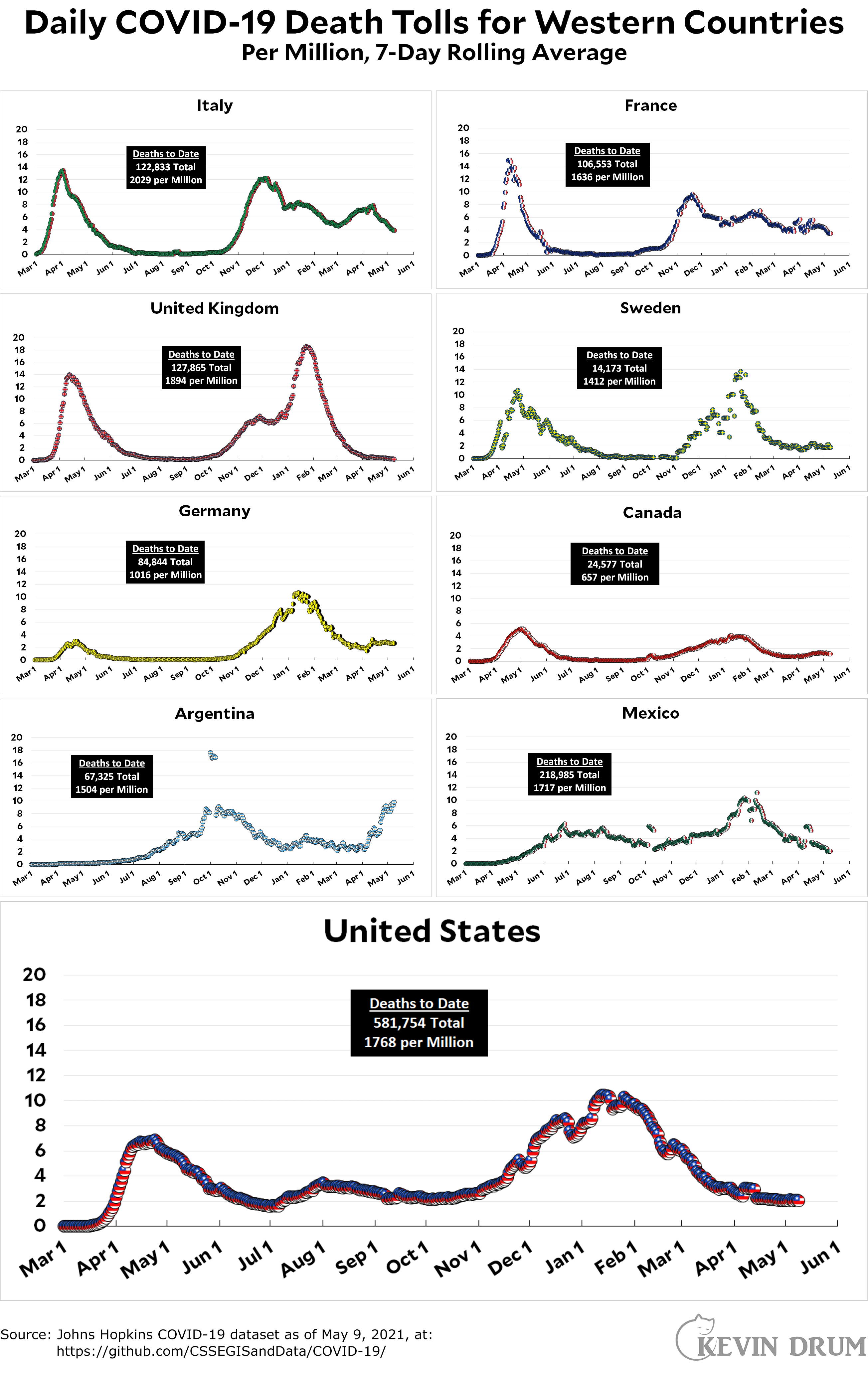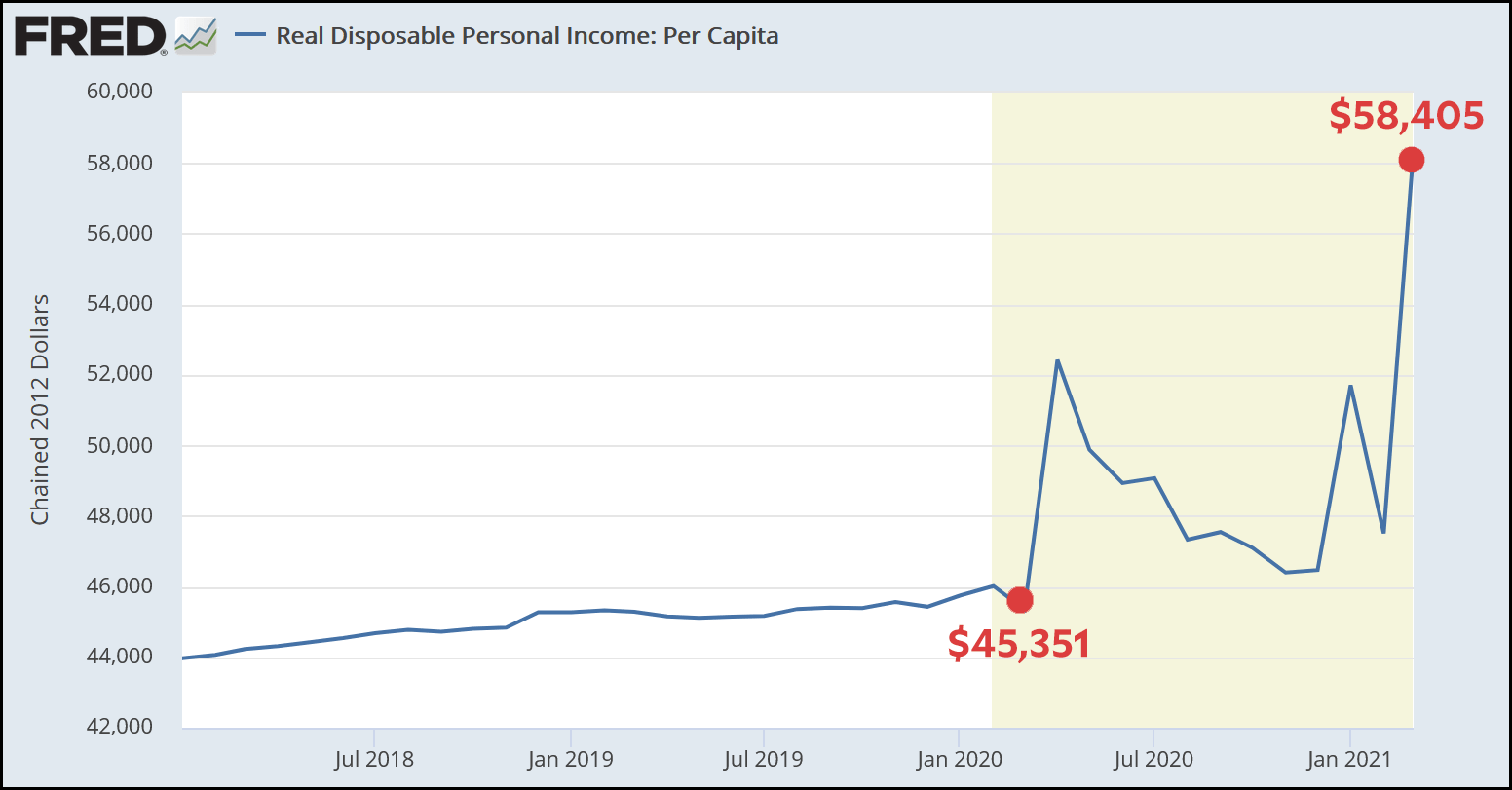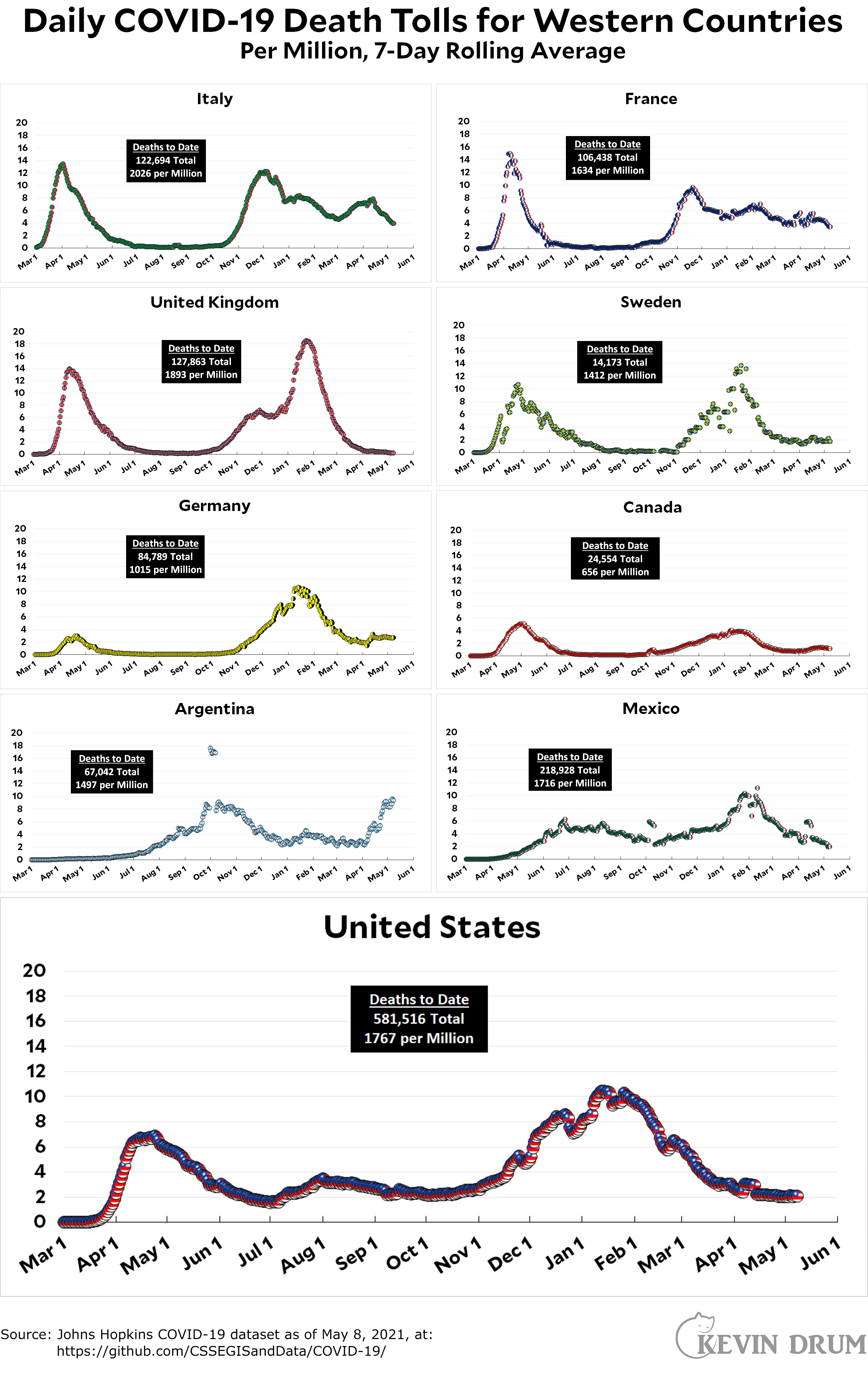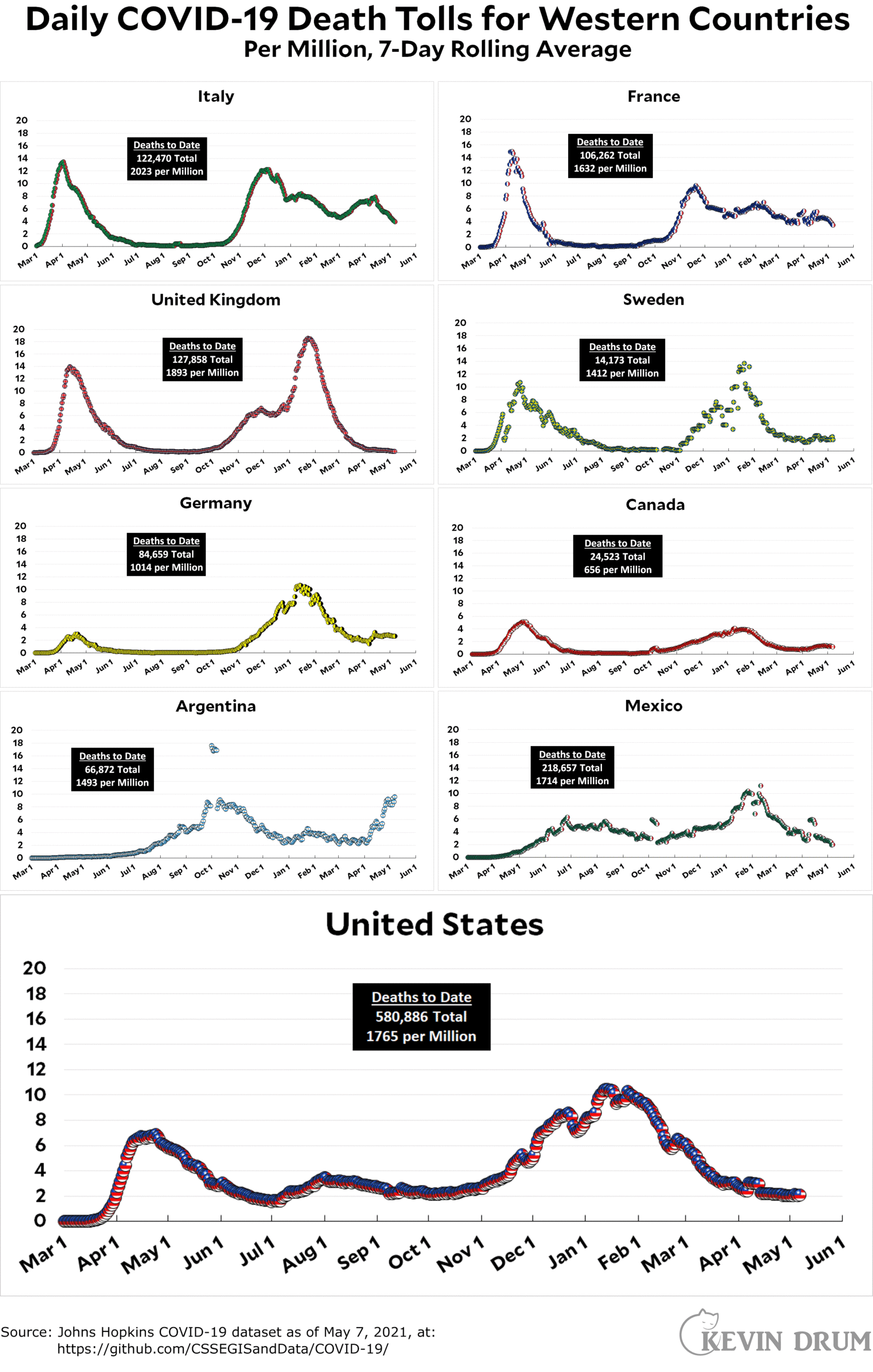For several years I've had an idea that would at least partially address the homeless problem in warm-weather cities. It was simple: Find a vacant lot, pave it over, and let people pitch their tents there. Provide toilets and running water. If it were up to me, I'd provide food three times a day too. Establish minimal police patrols, solely to prevent outbreaks of fighting or other violence. Otherwise, let the residents do whatever they want.
I never mentioned this for two reasons. First, I figured it probably violated a whole bunch of city codes and was therefore illegal. Second, who needs the grief from the professional homeless folks who will inundate me with tweets and emails telling me that only permanent housing is a real solution?
But last week the LA Times informed me that not only is my idea not outlandish, it's actually being used up and down the Pacific coast:
Cities up and down the West Coast, including Seattle, Sacramento and San Francisco, confronted by the high cost and slow progress of building housing for homeless people, have turned to these permitted tent encampments. They offer services such as toilets, meals and help finding a permanent place to stay. These efforts, once anathema among some homeless service providers, are becoming more widely accepted as unsheltered homelessness has grown and government officials reckon with a pandemic that has made placing people in large shelters dangerous.
The Times spoke with more than two dozen people who either have stayed or currently stay in these sites. Many wished for a room in a hotel or an apartment to call their own. Still, a majority said that they appreciate these lots, some of which will eventually have supportive housing built on them.
Johnson was one. He’s been trying to overcome an addiction to methamphetamine and wants to find a permanent place to live — something he hasn’t had since he broke up with his girlfriend two years ago. A hotel room would be a start, but he won’t go to one of the city’s large shelters, which have been the site of large outbreaks of COVID-19 and have strict rules and curfews.
“You can come and go as you please,” he said of the sanctioned tent encampments, which are called “safe sleep sites” by the city. “There are not as many rules.”
Like it or not, many people on the street actively avoid permanent housing because they don't want to put up with all the rules that come with it. Go ahead and ask anyone who's dealt with the homeless. They'll confirm that there's a percentage of the homeless who will flatly refuse if you offer them some kind of permanent shelter.
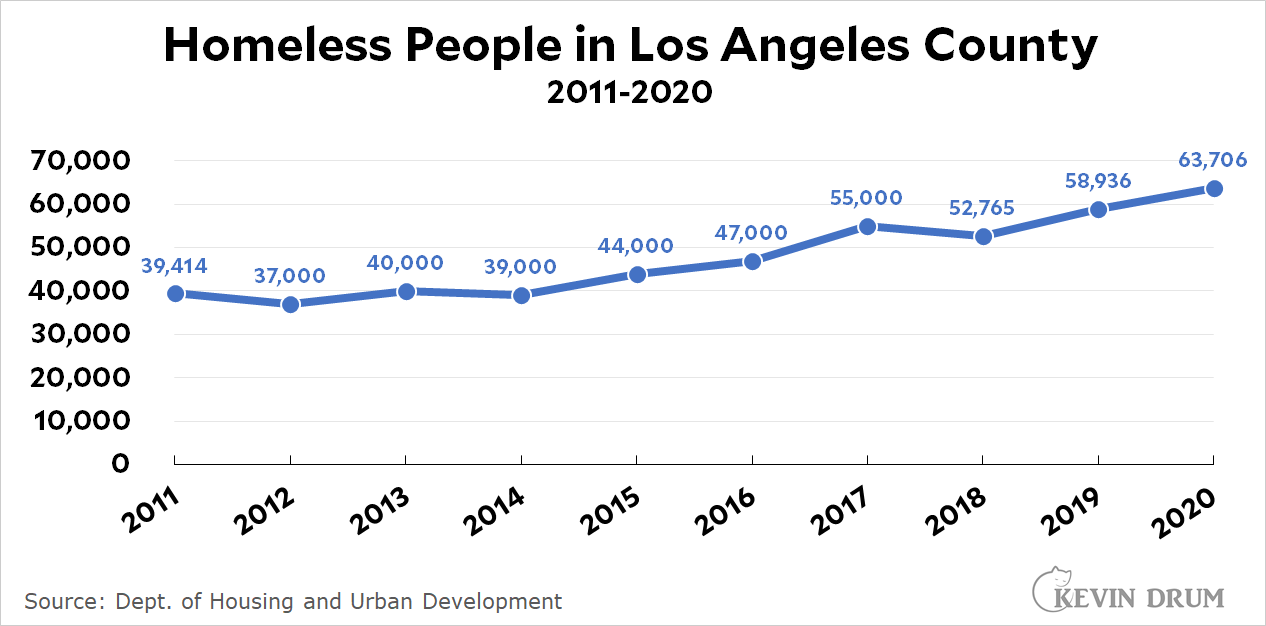
The LA Times story went up three days ago, and already there's the usual pushback from the professional homeless crowd. But I'm willing to bet that a big push to build tent encampments in Los Angeles would do more for homelessness in a year than the professionals can accomplish in ten. I mean, the pros are ecstatic if they can build a 50-unit shelter at a cost of $300,000 per unit. At that rate, homelessness will be conquered by around 2080.
So why not give the tent encampments a try? They're cheap, so they won't take much money away from more conventional shelter building, which can continue at its normal snail's pace. Meanwhile, though far from perfect, I'll bet that with cooperation and a concerted effort, you could build space for upwards of 20,000 street people in a year or so using tent encampments. It might not be great, but it would make a lot of lives better than they are now.
And the public would love it. What they want is some way to get homeless people off the streets, and this would do it. It would demonstrate visible progress, and this in turn would increase support for homeless programs. Right now there's tremendous cynicism about the billions of dollars allocated to homelessness that seem to have accomplished literally nothing. Why not try to change that?

